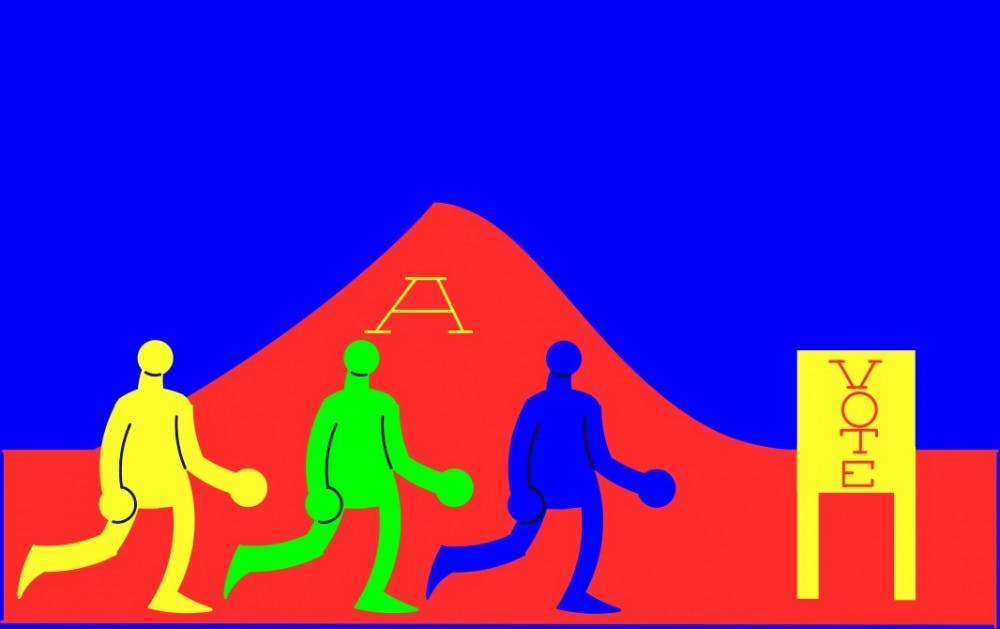Students from both the Young Democrats at ASU and Students for Civic Engagement are hopeful for the upcoming midterms based on this year's primary turnout.
The voter turnout in the recent primaries was around 33 percent, according to voter data collected by the Arizona Secretary of State. The previous record was set in 2010 at about 30 percent.
Jesse Avalos, president of Young Democrats at ASU and political science senior, said the turnout for the primaries makes him optimistic for the midterms.
“I think it’s very exciting to see,” Avalos said. “Hopefully … we’ll see a huge amount of turnouts because when people are starting to get involved in the primaries that’s a good indication that the general (election) will be a lot bigger.”
Keeley Phillips, vice president of ASU’s Students for Civic Engagement and biological sciences sophomore, said she is impressed with the overall level of civic engagement on campus this year compared to previous years.
“We started last year and we really didn’t see that much (civic engagement) activity,” Phillips said. “This year, we have been very impressed … with how student government has taken initiative and the way that (Changemaker Central at ASU) has taken initiative.”
Kim Fridkin, foundation professor at the School of Politics and Global Studies, said while turnout at primaries is not always indicative of turnout rates for the following election, she thinks this year will be different.
“Normally primary turnout ... doesn’t move around very much but turnout at the general election is likely to move up and down so I don’t think it's (usually) that strong a predictor,” Fridkin said. “but … in this year, the higher turnout in the primary is suggestive there will be higher turnout in the general election.”
Fridkin said despite 33 percent seeming like a low rate, it is an admirable turnout rate for a primary.
“(Thirty-three percent) is a good number for midterm primary,” Fridkin said. “Sometimes I see the average for a midterm primary is probably more around 15, 18 percent.”
Generally speaking, voting among the youth population is low. From 1972 to 2016, the percentage of young adults from ages 18 to 24 who voted in presidential elections, which have the most turnout, decreased from almost 50 percent to 39 percent, according to Child Trends.
Avalos said looking at the demographics, young people can make a difference by voting.
“Everybody who’s 18 and above and able to vote has no excuse but to get involved ... because now millennials are a big voting block, and we need to exercise that as much as we can,” Avalos said.
Austin Stumpf, former president of Young Democrats at ASU and chairman for District 26 Democrats, the district Tempe is in, said he saw an increase in turnout among the younger population rivaling the 2014 general election.
“Considering half of young people are independents … the fact that they still turn out at the same rate they did in a general election means there’s a lot more room to grow,” Stumpf said.
Millennials are more likely to call themselves independents than other generations, according to the Pew Research Center.
Fridkin said voting among young people has not been this high since the 2008 presidential election, where Barack Obama garnered 66 percent of voters under 30 years old.
“His message resonated more (with young adults)," Fridkin said. "I mean he was younger, but he seemed like a new type of politician.”
Avalos said this year's high turnout is likely due to the current political climate.
"We're seeing stuff for RedforEd (and) March For Our Lives that have encouraged even more turnout," Avalos said. "Politics is not just encompassed by partisanship but it also encompasses a lot more representation."
Reach the reporter at mzhao49@asu.edu and follow @michelle_zhao23 on Twitter.
Like The State Press on Facebook and follow @statepress on Twitter.




